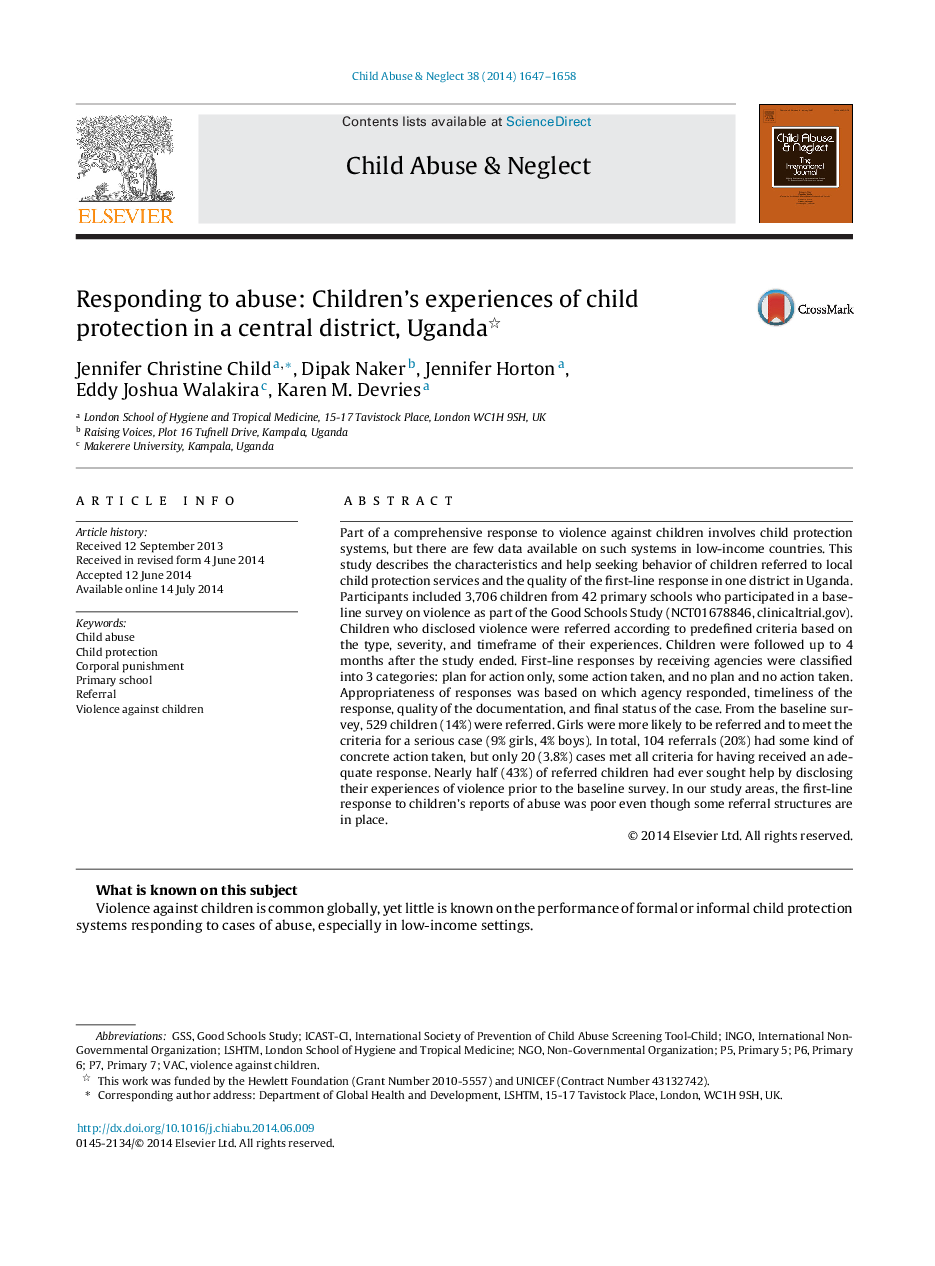| Article ID | Journal | Published Year | Pages | File Type |
|---|---|---|---|---|
| 10310763 | Child Abuse & Neglect | 2014 | 12 Pages |
Abstract
Part of a comprehensive response to violence against children involves child protection systems, but there are few data available on such systems in low-income countries. This study describes the characteristics and help seeking behavior of children referred to local child protection services and the quality of the first-line response in one district in Uganda. Participants included 3,706 children from 42 primary schools who participated in a baseline survey on violence as part of the Good Schools Study (NCT01678846, clinicaltrial.gov). Children who disclosed violence were referred according to predefined criteria based on the type, severity, and timeframe of their experiences. Children were followed up to 4 months after the study ended. First-line responses by receiving agencies were classified into 3 categories: plan for action only, some action taken, and no plan and no action taken. Appropriateness of responses was based on which agency responded, timeliness of the response, quality of the documentation, and final status of the case. From the baseline survey, 529 children (14%) were referred. Girls were more likely to be referred and to meet the criteria for a serious case (9% girls, 4% boys). In total, 104 referrals (20%) had some kind of concrete action taken, but only 20 (3.8%) cases met all criteria for having received an adequate response. Nearly half (43%) of referred children had ever sought help by disclosing their experiences of violence prior to the baseline survey. In our study areas, the first-line response to children's reports of abuse was poor even though some referral structures are in place.
Keywords
Related Topics
Health Sciences
Medicine and Dentistry
Perinatology, Pediatrics and Child Health
Authors
Jennifer Christine Child, Dipak Naker, Jennifer Horton, Eddy Joshua Walakira, Karen M. Devries,
